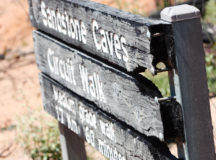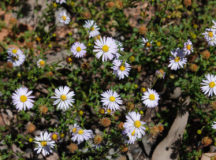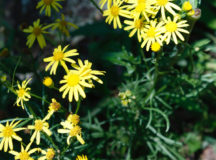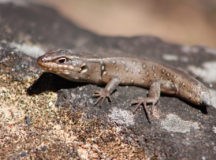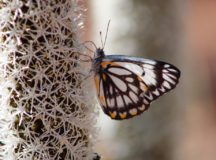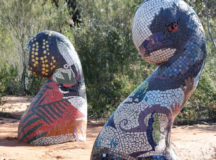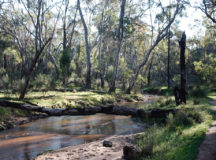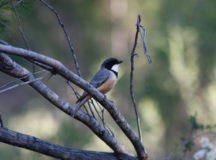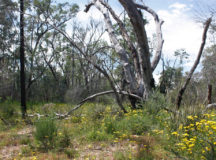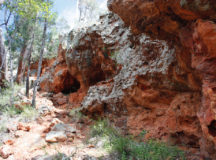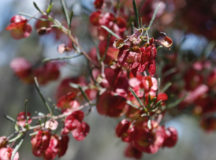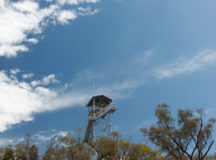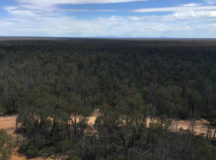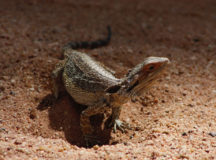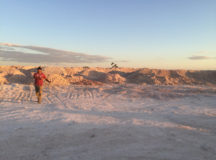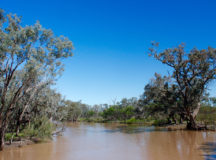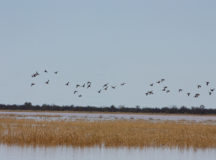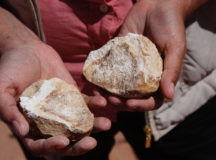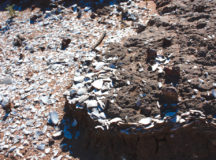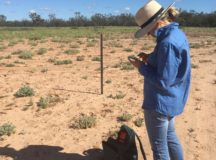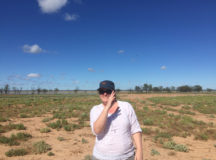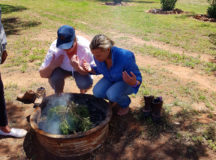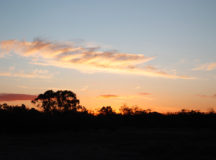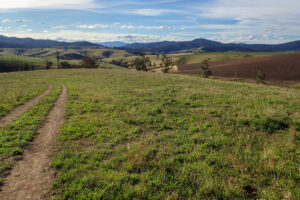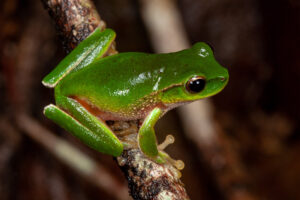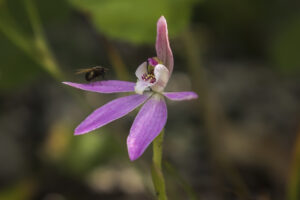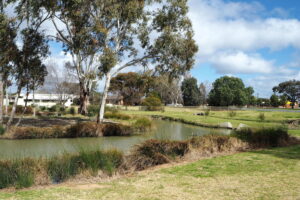
Travelling back to Outback NSW
Earlier in the year I was told, “You have to come back [to the Pilliga region] in October to see the wildflowers”. At the time I didn’t think that was going to happen, as I had completed my current round of field work in the area and it’s a long way from Bruthen. However, this was going to change.
We have been working on two separate projects in north west NSW over the past year – one with the Gawambaraay Pilliga Co-management Committee and the other with the Narran Lake Nature Reserve Co-management Committee – both in partnership with NSW National Parks and Wildlife Service.
We are working on the latter of the two projects with Michelle McKemey from Melaleuca Enterprises. To complete the Narran Lake Nature Reserve Education Kit, I required a first-hand understanding of the location and the cultural aspects of the reserve; so I joined Michelle on her second field trip. This gave me the opportunity to take a detour to the Pilliga and undertake more interviews with the women involved in the Winangaya Gundjarr sculpture out at Sculptures in the Scrub – which I am writing a book about.
Here’s just a very short photographic tale of my journey…
Stage 1: Travelling to Baradine, NSW
On my way to Baradine, driving down the Newell Highway from Moree to Coonabarabran, I had to stop off at the Sandstone Caves. Having worked on an education resource for this site over the past 12+ months, I was shocked to hear that a bushfire ripped through the site in December 2015. This visit was to see how the country had responded to the fire.
- The fire almost burnt this sign down.
- Brachycombe were everywhere.
- If the flowers weren’t purple, they were vibrant and yellow.
- This stumpy White’s Skink posed for quite a while.
- I spent 30mins or more trying to get a butterfly photo. Finally got one when I was back at the car!
Stage 2: Back out to Sculptures in the Scrub
This has been my forth visit to Sculptures in the Scrub. It’s a place that brings a lot of peace to my soul…I just love it out there. This is Gomeroi Country. When I stepped out the car in the car park, I could hear nothing but frogs – a good sign of the rain they have had in the region…as were the mosquitoes!
- Late afternoon sun on the Winanyaya Gunidjarr sculptures
- Water flows through Dandry Gorge – it was so green. I could have stayed for hours listening to the birds and frogs.
- This Rufous whistler posed in front of me as I got back to the car park. Love their call.
Stage 3: Salt Caves and the Salt Caves Dam
This was an interesting journey as some of the main roads out in the national park were closed after the rains, but the wildflowers near the creek crossings were abundant. The walk to and from the dam was a hot one, but once I got back and climbed the fire tower the wind soon cooled me down and I could appreciate the shear vastness of the Pilliga forest – from the Warrumbungles to the Nandewar Ranges.
- Travelling to the Salt Caves was slow, especially when stopping all the time for scenes like this.
- The Salt Caves are an outcrop of coarse red sandstone.
- The red papery wings of the hop bush fruit were abundant on the walk to the dam.
- The fire tower is located on the top of the escarpment.
- From the top of the tower you can see the Warrumbungles in one direction and the Nandewar Ranges (Mount Kaputar) in the other. Looking from one ancient volcano to another.
- This bearded dragon was having his lunch on the road but was quite happy for me to stop and take LOTS of photos.
Stage 4: East Mullane and Narran Lake Nature Reserve
I travelled back to Moree, where Michelle picked me up and we drove to ‘East Mullane’ – the Ranger’s Station out near Narran Lake Nature Reserve. The services out here are quite comfortable with a full kitchen, campfire area and sleeping quarters; but if you’re looking for mobile reception…this is where you go to get ‘off-the-grid’. This is Uallaroi Country.
The first night Michelle and I spent time with the boys, who took us on a tour of the nearby opal mining sites, followed by a couple of bar hops to ‘re-hydrate’ and grab a meal. It wasn’t bad for the middle of nowhere.
After catching up with the whole committee the next day, we got to spend time with the women of the committee. We spent a few hours travelling around the key areas they wanted to show us, spotted some wildlife and kept our eyes open for bush foods. I was amazed at the artefact scatters around the lakes – which were full for the first time in eight years! You couldn’t take two steps without seeing stone that had been worked or flaked off in the knapping process. There were also grinding stones, hearth stones and some scatters that hadn’t been seen before as the silt and sand had been washed away from the recent rains. I knew it was an incredibly important cultural site from the resource we’re creating, but it’s not until you see it yourself that you realise just how important it is.
On the final day, Michelle and I headed back out to the Day Use Area and trekked all the walks ourselves to test them for the school activities we’re creating. Once again, you can’t value the importance on getting onsite yourself when creating education materials that hold such importance for the local people. Something we will keep in mind for future projects. Before we left, the women held a smoking ceremony so that we could cleanse ourselves of any bad spirits and we were given a parting gift – a beautifully carved coolamon.
- Noodling for opal in the mullock heaps.
- The Narran River is full and flowing strong.
- We disturb the ducks as we near the water. Such a great sight to see.
- This ochre is so light, it is like holding pumice stone.
- The middens out here are huge – just testament to the mass gatherings that used to occur around the lakes.
- We might be in the middle of nowhere but when you get reception it’s time for a Facebook update.
- Taking a photo is not that glamorous when you have to keep shooing away the flies.
- Michelle and I get ‘smoked’ to rid ourselves of bad spirits.
- It’s great watching an outback sunset… except for the mosquitoes that have you running for cover.
Written by Kelly Coleman

